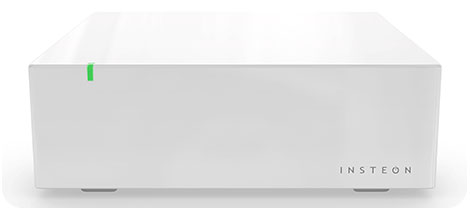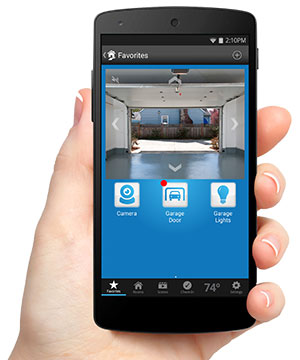
I was at Dell’s thin client briefing earlier this week at its new facility in California’s Silicon Valley, and it clearly is feeling very confident, in light of HP’s plan to split its company.
There really have been only two major players in the thin client space for a few years, and they are HP and Dell, but since thin clients require both a specialized client focus and unique servers, splitting HP along those lines would seem to make its offering obsolete.
The idea of a computing appliance has been attractive for a long time, but it still is only a small fraction of the available market, even though it’s been almost 20 years since the concept was first announced by Oracle and Sun.
I think that is about to change — largely due to the actions of firms we typically don’t connect to this effort — but I still think we need a big iPod/iPhone/iPad-like trigger before the market pivots and this shifts from being the exception to the standard.
I’ll dig into that and close with my product of the week: the new hub from Insteon.
Why Thin Clients Initially Failed
The lack of adoption of thin clients really came down to three things: the networks weren’t ready; the technology wasn’t ready; and the companies that were trying to drive them into the market couldn’t spell “PC.” I don’t think you can replace something unless you have a deep competence in what it is you are trying to replace, and this last thing was the overarching problem with the early efforts.
I can remember a conference at which I chaired a session with CIOs talking about PCs, and Sun execs in the room went off about how Microsoft sucked and its Sun Ray One thin client was the wave of the future. I was taken aback a bit, because they were supposed to be in the room observing, not pitching their products. Almost as one, the CIOs ripped into the Sun execs, pointing out that as bad as Microsoft was, Sun’s solution was far worse — being far harder to deploy, delivering horrid performance, and being higher in cost with an unacceptably low compatibility with existing software.
That event sticks with me, because it is one of the few times I’ve seen a vendor step into a room of customers convinced it had a product that couldn’t be refused only to find out it instead had a product that couldn’t be sold.
Thin client development split into two camps: those that were focused on providing blade PCs and those focused on using servers as the processing platform. The first group could provide a near-identical PC level experience but had huge cost disadvantages. The second, while far less expensive, had a massive performance disadvantage.
Ironically, HP was the only company adopting both concepts — but rather than creating an interesting blend, it seemed to pit the two against each other, massively reducing its potential market.
Cloud, MU-MIMO, and Grid
Performance, availability and cost remained the big impediments to making thin clients work. Using servers could reduce the cost, but servers simply weren’t designed to handle the processor loading required by someone wanting PC-level performance. When the market stalled on Windows XP, there was a big opportunity to close the gap, but that opportunity appears largely to have been missed. However, there are three advancements that are coming together — nearly accidentally — that should do the job.
Nvidia Grid is really the first server technology designed from the ground up both to be sold to others and to provide the level of performance required by PC users moving to a client model. Grid now has moved to Dell, VCE and IBM for VDI solutions, and it currently is unmatched in market for this use.
Qualcomm last week announced MU-MIMO, which performs like a switched wired network, increasing wireless performance to rival wired. Thin clients are heavily dependent on network performance, and requiring a wired connection to get adequate performance was the second huge cause of the poor performance that crippled this class.
Finally, while OnLive showcased that a cloud service offering a hosted PC desktop was possible, it is firms like Mainframe 2 that are taking this more effectively to business, albeit small business, allowing a solution to move to areas likely to be able to adopt it more quickly.
By the end of next year, when the MU-MIMO products should be broadly available, virtually all of the impediments will be gone — but you don’t flip a market by removing the impediments, you flip a market by providing unique user-focused benefits.
Cloud Client
The benefit that thin client technology should be able to provide is that you don’t have to carry hardware — what you need is always with you. Dell and others have experimented with dongles — basically HDMI-based USB stick-like devices you can plug into TVs and monitors to give you your desktop — but they have two problems. First, you need to carry input devices, and second, you need to have a monitor.
If you have to carry a keyboard and mouse and search for a monitor, that isn’t very convenient, and it is unusable on a plane. Chromebooks are another approach to this. You have a laptop experience that moves with you, but in the end, you’re too often going to miss the other stuff you can use a laptop for, and you lose the idea of not carrying any hardware.
While I was thinking about this, I was holding my Shield tablet. What makes the Shield tablet very different is that it was designed to be connected to, and bundled with, Nvidia’s Grid back end — but for gaming. As a tablet, it is a fully functional device even when disconnected — but when connected, it provides PC-level gaming and can be plugged into monitors and connected to Bluetooth keyboards and mice to become a PC.
I think this form factor is far closer to what we are likely to find compelling — though a more portable keyboard and mouse solution, or a different but still acceptable form of input would improve adoption significantly.
Wrapping Up: Waiting For The iPod/iPhone/iPad
Before the iPod, hard drive-based MP3 players were a tiny fraction of the market. Before the iPhone, you couldn’t seem to give away big screen smartphones. Before the iPad, tablets were successful only in some verticals. The PC is a user-focused device. It initially was carried to success by user-focused firms like Apple, Atari and Commodore. Even Microsoft started as more of a user-focused company. I think the same path will be required for thin clients.
For thin clients to take off, I think we’ll need a service like Mainframe 2 or OnLive that can address both consumer and business customers, because our PCs do address these needs for most users. We’ll need a client device that can embrace both and offer a more compelling solution.
Working in favor of this are improvements in voice command, AI (systems like Siri, Cortana and Watson), and massive improvements in flexible displays, which can give us large screen devices we may be able to put in our pockets.
Whoever comes up with this first at scale likely will own this segment — and that could be Dell or Apple, Microsoft or Google, or someone we have yet to identify (which is becoming more and more likely).
Product of the Week: The New Insteon Hub

Both of my homes use Insteon to automate lights throughout. This isn’t an inexpensive solution, but because it uses both wired and wireless technology and creates a more Apple-like experience, it remains my personal favorite.
However, the user experience hinges on the Insteon Hub, a centralized device that provides both the automation and security for the system, which now includes security cameras. Insteon recently brought out a new version of the Hub and released it at a price just under US$40, which is pretty amazing for something that traditionally cost several hundred dollars.

The Hub was always cloud-connected but now it is easier to set up and far easier to use. For instance, now you can see both the switch controls and the camera feed, so you actually can see the lights go on and off remotely. If you want to operate and see into your home remotely, Insteon has made improvements to how you drill through your router, so you can get this stuff working more easily.

Given the new Insteon Hub has made my life easier, it is my product of the week.






















































